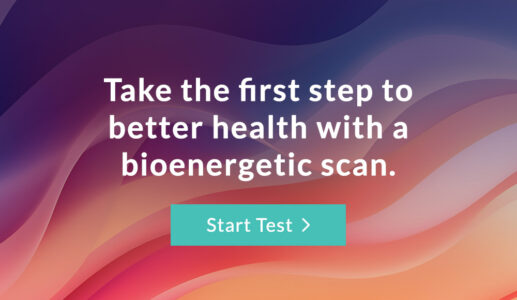
What is the Integumentary System on Bioresonance Testing?
If you’ve done bioresonance scanning with us, you may have had the Integumentary System Dial show up stressed on your Full Scan report. The term can sound strange. The Integumentary System is your skin, hair, and nails. All three of these work together to protect your body from various kinds of damage, the elements of the environment, including loss of water or injury.
The Integumentary System in pets can be considered the skin and its appendages, including hair, or coat, scales, feathers, hooves, and nails. This system has a variety of functions; it may serve to waterproof, cushion, and protect the deeper tissues, excrete wastes, and regulate temperature, and is the attachment site for sensory receptors to detect pain, sensation, pressure, and temperature. It seems that this is connected to the Nervous System too!
In humans, this system plays an integral role in homeostasis—the physiological balance that maintains life. The skin is not just a protective shell to keep your insides in, it’s a complex system affected by both the body and the external environment.
Did you know that your skin makes up about 16% of your body weight?
Or that it renews itself every 28 days?
These are just a few of the interesting facts about the Integumentary System. Another fascinating fact is that the skin is home to more than 1,000 species of bacteria. Some of the beneficial microorganisms play a role in protecting the skin from harmful bacteria, making them an essential part of the integumentary system.
The balance of bacteria can change in the skin, hair, and nails. Both hair and nails can be affected by toxins like fungus.
Ever had athlete’s foot? That is skin fungus doing its itchy magic!
It’s not exactly magical, when you have that kind of itch, and it can happen between toes, and in the genital area too. There are many strains of fungus that overgrows on skin, including one species called Trichophyton, which contains over 16 different types. If you resonated with Integumentary stress, check to see if there are resonating molds and fungus that are passed person to person, in your Environmental Toxin section of your Full Scan.
What is the Integumentary System and Structure?
The structure of the Integumentary System is more than skin, hair and nails. There are exocrine glands in the skin. These include sweat glands, which are an important part of natural temperature regulation and detoxification. These also include sebaceous glands.
The largest organ of the body, the skin, is composed of two layers: the epidermis and the dermis. The epidermis is the most superficial layer of the skin that acts as the body’s major barrier against the environment. The dermis, meanwhile, is the deeper and thicker layer of skin underlying the epidermis.
Your hair originates from hair follicles deep within the dermis and serves to protect the body by trapping microbes and dust in the environment. The nails, on the other hand, are formed in the nail root and serve to protect the tips of fingers and toes from mechanical injury. If you have breaking or weak nails, this can be a sign of issues with your Digestive System and possibly absorbing nutrients. Your Thyroid can even affect your skin, hair and nails!
Functions of the Integumentary System
The Integumentary System performs a wide range of functions. Its primary function is to act as a barrier to protect the body from the external environment. It prevents water loss and the entry of bacteria and other harmful agents into the body. The skin also contains specialized cells that produce melanin, which serves to protect the body from ultraviolet (UV) radiation.
In addition to these protective functions, the Integumentary System plays a role in temperature regulation. The sweat glands in the skin help to cool the body when it becomes overheated and the constriction or dilation of blood vessels in the skin help to conserve or dispel heat. When it comes to toxicity, we know that sweating is a helpful detox mechanism!
The Integumentary System also plays a role in sensation, housing a multitude of nerve endings that respond to touch, pressure, temperature, and pain stimulus.
Anatomy of the Skin in the Integumentary System
The epidermis of your skin is composed of stratified squamous epithelial tissue. This layer of the skin is responsible for the skin’s barrier function and houses those melanocytes, which produce the pigment melanin.
The dermis, the layer beneath the epidermis, is composed of two layers of its own: the papillary layer and the reticular layer. The papillary layer is the most superficial layer of the dermis and contains fine collagen fibers. The reticular layer is the deeper and thicker layer of the dermis, containing coarse, dense fibrils of collagen.
Collagen is part of your Integumentary System and your Locomotor System.
Toxins That Impact the Integumentary System
Your skin is a breathable organ! This means that things can pass out of it, like sweat, and move into your body through your skin. There are many toxins linked to the Integumentary System that may show up with bioresonance testing, These Include:
- Mold & Mycotoxins
- Tinea versicolor
- Trichophyton
- Candida
- Rickettsia
- Parasites
- Parvovirus
- Bartonella
- HH6
- Coxsackie
- Anaplasma
- Herpes zoster
- Nickel and other metals
There are many more than these. Clearing toxins that impact the Integumentary System may involve supporting the Liver, the Digestive System, the Lymph System and the Blood System.
How to Keep Your Integumentary System Healthy
There are a multitude of issues that can affect the Integumentary System, including:
- Athlete’s foot
- Acne
- Eczema
- Skin cancer
- Rashes
Addressing these issues depends on the specific condition and its severity. We have read some blogs that put acne into a “minor skin disorder category”. While it isn’t life threatening like melanoma, acne, especially acne vulgaris, can affect a person’s self esteem, social life, and body image, in a way that can have lifelong implications.
Scan Tip: The bacteria propionbacterium acnes resonates frequently with those who suffer from acne, and their Integumentary Dial may show up stressed. Interestingly, p. acnes can also be cultured from the mouth and the genital tract (1). Other connections to acne could be Liver stress, and even Digestive System stress.
The general recommendation for many types of acne are antibiotics, birth control pills and topical creams. We will never tell you to stop taking your medication, as we do not diagnose or treat disease, however we will encourage you to support all body systems when struggling with a skin condition.
When it comes to things like suspecting skin cancer, a licensed care professional is imperative. Always have changing moles, suspicious spots checked out by your physician.
Maintaining the health of your integumentary system is part of immune health.
Top Takeaways to Support the Integumentary System
Making sure you are supporting your skin, har and nails from the inside out is the best way to improve the appearance of skin. Nutrition will also protect your Integumentary System from damage. Adequate nutrients in your diet to support the Integumentary System and it’s building blocks like collagen.
Two nutrient categories to consider (which are assessed on our Full Scan, Balancing Scan and Awareness Scan include:
- Essential Fatty Acids (EFAs). These support oil production, skin hydration and suppleness, and may help those with eczema. These tend to be Omega-3 and some Omega-6 fatty acids. Other fatty acids, like linoleic acids are essential to support the Integumentary System, specifically skin (1). These also support hair and scalp health. Scalp is skin, isn’t it? The Omega 3 acids EPA and DPA are particularly linked to hair, along with brain and Nervous System Health. Choose foods like fatty fish, walnuts, chia seeds, flax seeds.
SCAN TIP: Did these come up energetically sensitive in your report? Look at your digestion to see if there is an enzyme connection, namely lipase.
-
- Minerals. Zinc is a cofactor in using certain proteins to make collagen in the body. It’s linked to the activity of an enzyme called collagenase. Bone metabolism is altered in animal studies, when zinc is lacking (2).
Copper. Copper and zinc need to be balanced in the body, as copper also helps build collagen structure through enzymatic activity.
Selenium. Did you know that selenium is needed for the synthesis of more than 35 proteins? Low selenium is linked to loss of hair pigmentation (3).
- Minerals. Zinc is a cofactor in using certain proteins to make collagen in the body. It’s linked to the activity of an enzyme called collagenase. Bone metabolism is altered in animal studies, when zinc is lacking (2).
SCAN TIP: If minerals show up energetically imbalanced in your report, look to the Enzyme section for Hydrochloric acid . An energetic imbalance in this might change the absorption of minerals from your food.
Other nutrients related to the Integumentary System include: Vitamin A, C, D, E, along with iron, Vitamins B2, B12 and Biotin (3).
The Integumentary System loves to stay hydrated. Adequate fluid intake keeps all cells in the body working well, supports your detoxification processes, and keeps skin soft, preventing cracking. This is especially important if you are using saunas regularly, and are exercising a lot. If your Cellular Metabolism Dial is stressed, the first thing we want you to assess is your hydration.
Pay attention to your skin care routine. With all the wellness information out there we forget that regular washing, but not too much, can support a balanced skin microbiome. Hot water can dry the skin, so adjust according to your needs and skin type. Some people do well with oil cleansing for the skin!
To sun or not to sun? Sun gives us the beginning of Vitamin D, which then has to go to the liver and the kidney to convert. (If you have energetically imbalanced Vitamin D on your report, look to the Liver/gallbladder and the Urogenital System for stress). Both ofd these systems support the conversion and utilization for Vitamin D.
The advice to wear sunscreen or not, is confusing. What makes sense for you? Excessive sun exposure is a common concern. Use a sunscreen if you see fit, or cover up with protective clothing, or get sun on your bare skin. Only you know what is right for you. Regular self-examinations of the skin for any changes or abnormalities are always advised.
Dry Brushing. If you have healthy intact skin, the practice of dry brushing can help improve circulation which in turn improves the delivery of nutrients to your skin and also improves the appearance of it. Brushing your hair with a natural brush, or massaging in essential oils will support your scalp and hair health.
Your skin, hair and nails are the initial protectors of your body. They help keep you warm, protect parts of your body, and regulate temperature. The skin itself relays sensations to your Nervous System. If your skin or nails are not intact, this can eventually stress your Immune System, as invaders can get into the body.
Need clarification on your bio-resonance scanning report? Book a consult with one of our well trained team here.
DISCLAIMER: Balanced Health, LLC/CBH Energetics and any parent, subsidiary, affiliated or related entities and companies do not provide medical advice or services. This post and the bioenergetic products and services offered by Balanced Health, LLC/CBH Energetics including, but not limited to, bioenergetic tests, bioenergetic scans, bioenergetic reports and related products and services (collectively the “Bioenergetic Products and Services”) are designed for educational and informational purposes only and are not intended to diagnose, treat, cure, or prevent any disease, condition, complaint, illness or medical condition and are not a substitute for professional services or medical advice. Testing is not used for the purpose of obtaining information for the diagnosis, prevention, or treatment of disease or the assessment of a health condition or for identification purposes.


